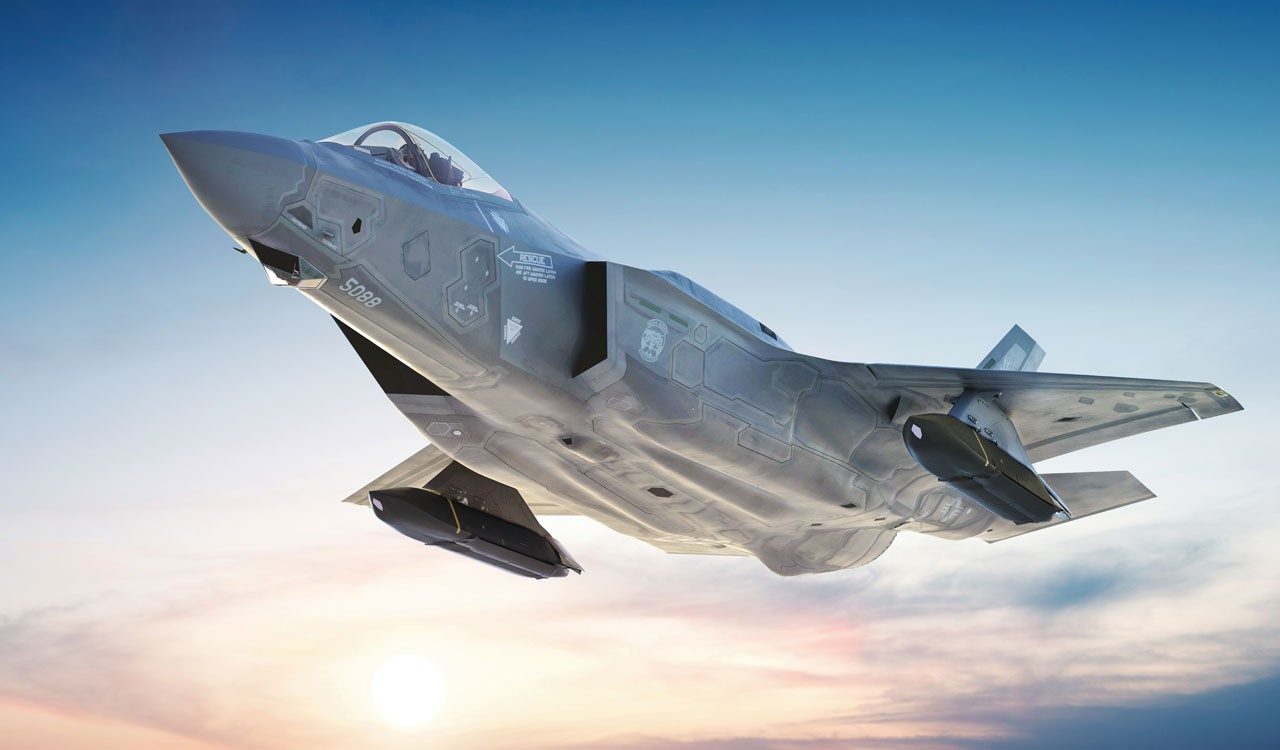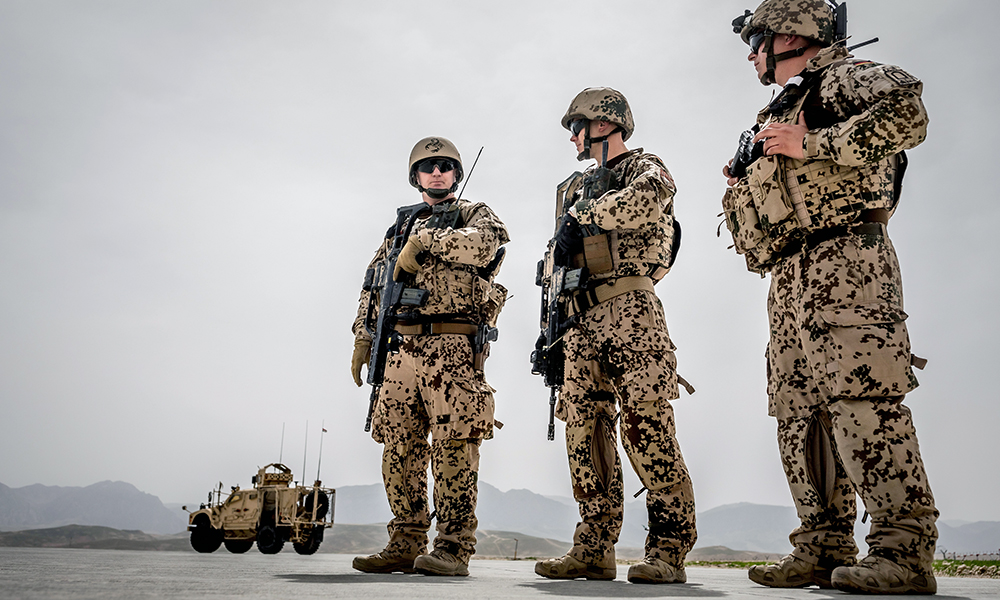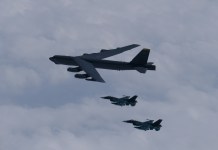Days after announcing that it would purchase 20 more Eurofighter Typhoons, Germany may be poised to buy Lockheed Martin F-35 Lightning II jets, too.
An unknown military source told Reuters on June 7 that, in addition to the 35 fighter jets it has already ordered, Germany is considering purchasing eight more F-35s from American defense firm Lockheed Martin, opening a new tab. According to the source, Berlin is currently analyzing the expenses associated with acquiring additional stealth fighters.
Shortly after Russia invaded Ukraine, Germany decided to procure 35 F-35 jets from the United States in March 2022, along with missiles and other armaments, for about 10 billion euros ($10.89B). The move marked the culmination of its efforts to replace its aging Tornado fleet.
The first F-35 will be delivered to the German Bundeswehr in the US in 2026. The remaining fighter jets will be delivered to the Luftwaffe in Germany in 2027. The Luftwaffe will commence training on these jets in the US in 2026 or 2027.
The German Air Force is modernizing Büchel Air Base as the primary operating base for the F-35As before its induction into service.
Significantly, a second order is being worked out even though the delivery of the first order is still three years away. Reports about a follow-up order come days after German Chancellor Olaf Scholz announced the purchase of 20 Eurofighter Typhoons.
“We will order 20 more Eurofighters before the end of this legislative session (scheduled for autumn 2025) — in addition to the 38 aircraft currently in the pipeline,” he said at the ongoing Berlin Air Show.
Although the German administration has not acknowledged the additional purchase of the F-35s, it is part of Germany’s overall military modernization plan in the wake of Russia’s invasion of Ukraine.
Days after Russia invaded Ukraine, on February 27, 2022, Chancellor Olaf Scholz announced a more assertive foreign policy supplemented by increased military spending, which he named the “Zeitenwende (literally, “historical turning point”).”
Germany has established a €100 billion special fund to purchase modern weapons as part of the “Zeitenwende” and pledged to meet NATO’s target of allocating at least 2% of the country’s GDP to defense from 2024 onwards. This was the first step to rebuilding the military after years of decline following the end of the Cold War. Not surprisingly, the first major project for which the fund was used was the acquisition of the F-35s.
Germany is considering upgrading its nuclear-capable Tornado fighters with the certified nuclear-capable F-35s. In March this year, the German Luftwaffe said that obtaining nuclear certification for the Lockheed Martin F-35A Lightning II Joint Strike Fighter (JSF) was a key factor for the purchase of the aircraft.
Recent reports about a German consideration of additional F-35A jets come after the Dutch government announced that the Royal Netherlands Air Force (RNLAF) would fully transition from the F-16 Fighting Falcons to the advanced F-35 aircraft for NATO’s nuclear deterrence mission.
A similar capability would significantly bolster the Luftwaffe. Although Berlin does not have nuclear weapons, NATO’s ‘Nuclear Sharing’ doctrine enables members without nukes to participate in NATO’s nuclear deployment. Belgium, Germany, Italy, and the Netherlands host US-based nukes for deterrence against Russia.
Since the invasion of Ukraine was launched, Germany has transformed its strategy from complacency to taking a lead in making its military combat-ready. Despite the efforts already made, there have been warnings that the country needs to enhance its capability to fight a war by 2029.

Concerns & Preparations For War
German Defense Minister Boris Pistorius warned on June 5 that his country needed to prepare for war. “We must be ready for war by 2029,” news magazine Der Spiegel quoted Pistorius saying in the German parliament.
His remarks coincide with heightened concerns about possible Russian aggression stretching beyond Ukraine among European nations, particularly those in Eastern Europe. “We must not believe that Putin will stop at Ukraine’s borders when he gets that far,” Pistorius said.
The Germans are also preparing for war in several different ways. They are reportedly developing new wartime strategies, including regulating food distribution, bringing back military conscription, and utilizing subterranean structures as shelters.
Military conscription appears to be high on the agenda. The German defense minister told Parliament, “In an emergency, we need strong young women and men who can defend this country.” Pistorius also said he believed a “new form of military service” was necessary that “cannot be completely free of obligations.”

Pistorius has given his ministry the task of looking at possible conscription models. Germany previously had a compulsory conscription system but it was axed in 2011.
Last month, Chancellor Olaf Scholz stated that Germany needed to find ways to encourage people to enlist in the military. The nation is considering using conscription to bolster its long-neglected defenses in light of tensions with Russia. “Ultimately, it’s about how we can convince enough women and men to work in the Bundeswehr and find a job for themselves there,” Scholz said during a visit to Sweden.
The German Opposition has similar views. The conservative Christian Democratic Union (CDU), Germany’s largest opposition party, voted last month to put a gradual return to mandatory military service back on its agenda after much deliberation. This implies that if the CDU retakes power, it will attempt to pass laws that require young people to spend a year volunteering in the social sector or the armed forces.
With new plans to prepare the German military for a potential war, conscription and acquisition of sophisticated equipment would be the determining feature of the country’s new defense policy.
- Contact the author at sakshi.tiwari9555 (at) gmail.com
- Follow EurAsian Times on Google News




